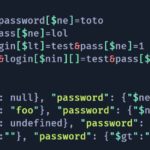No products in the cart.

Codename "Double Kill": The top cyber security vulnerability of 2018 by Nicholas Patterson, Phd "Browser exploits are still the most effective exploited vulnerability from 2018. With new threats to mobile and IoT in the cyber security space our focus shifts in that direction, however, we still need to keep a....
Author
Latest Articles
 BlogDecember 28, 2022Cybersecurity in Education: What Parents, Teachers, and Students Should Know in 2023
BlogDecember 28, 2022Cybersecurity in Education: What Parents, Teachers, and Students Should Know in 2023 BlogDecember 15, 2022Remembering Leonard Jacobs
BlogDecember 15, 2022Remembering Leonard Jacobs BlogSeptember 30, 2022VPN Security: A Pentester's Guide to VPN Vulnerabilities
BlogSeptember 30, 2022VPN Security: A Pentester's Guide to VPN Vulnerabilities BlogAugust 9, 2022AppSec Tales II | Sign-in
BlogAugust 9, 2022AppSec Tales II | Sign-in
Subscribe
Login
0 Comments
